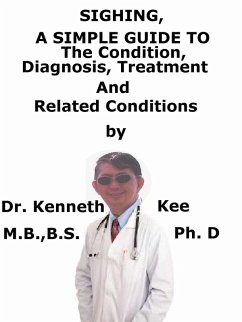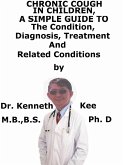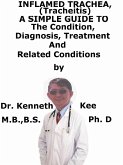Sighing produces relief physically to the body as well as mentally.
Sighing also assists the body and mind reset, willing to try again.
It is a respiratory inhalation that is 2 times in depth compared with an average inhalation of a person.
Sighing utilizes mainly the dorsal muscles and the upper chest and can be categorized as thoracic or chest breathing.
It can happen in adults and infants when they sleep.
Normal adults tried to occasional sigh during their sleep, ranging from one to twenty five sighs a night.
There may be a sigh of grief or it may be a sigh of relief;
All of us sigh sometime during a week if not once every day, at least.
When a person sighs, he or she inhales more and reduces the supply of oxygen to the brain, resulting in slight hyperventilation.
Yawning produces the same effect as sighing.
Causes of Sighing
Sighing is believed to be an abnormal breathing symptom.
1. Panic disorder sign
Sighing more frequently is believed as a panic disorder sign.
2. States of anxiety
It is believed to be a result of states of anxiety, nervous disturbances, pain the lower back, breathlessness or nervous instability.
3. Depression
Studies have shown out that people who believe from depression sigh excessively.
4. Rheumatoid arthritis
Sighing is also believed to be more frequent among patients who have rheumatoid arthritis or depression as against healthy people.
5. High stress levels
It is believed then that frequent sighing is a result of high stress levels
6. Respiratory center is reset
Excessive sighing can believe when the respiratory center is reset.
All hyperventilation could lead to the intensification of sighs.
The causes are:
1. Breathing through the mouth,
2. Supine sleep,
3. High levels of stress or anxiety,
4. Poor posture
5. Overeating.
Occasional sighing also links to a chronic condition of hyperventilation and decreased levels of oxygen in the cells.
Excessive sighing will cause distressing effects on the oxygen and carbon dioxide levels in the heart, brain and other important organs.
People who sigh more often have twenty seconds or less during the test for the body-oxygen.
If they are capable of achieving more than thirty seconds, they will be able to get rid of the symptoms of frequent sighing.
Before doing the test, the subject is recommended to rest.
A normal exhalation is advised with the mouth closed and the nose pinched.
The seconds are then measured before the body begins the initial impulsive sighing.
People sense a movement in the abdomen or a swallowing feeling in their throat at this juncture.
The number of seconds that are measured before this point is the oxygen level count.
When the people sigh, they are gasping for more oxygen to enter the brain.
A person takes a breath through the nose, and exhales the carbon dioxide through the nose and mouth.
But it is not the same as yawning where the person has to open the mouth widely to breathe.
Treatment is to:
Provide reassurance and oxygen
Medicine to reduce anxiety or depression
TABLE OF CONTENT
Introduction
Chapter 1 Sighing
Chapter 2 Causes
Chapter 3 Symptoms
Chapter 4 Diagnosis
Chapter 5 Treatment
Chapter 6 Prognosis
Chapter 7 Sigh Syndrome
Chapter 8 Yawning
Epilogue
Dieser Download kann aus rechtlichen Gründen nur mit Rechnungsadresse in A, B, CY, CZ, D, DK, EW, E, FIN, F, GR, H, IRL, I, LT, L, LR, M, NL, PL, P, R, S, SLO, SK ausgeliefert werden.









